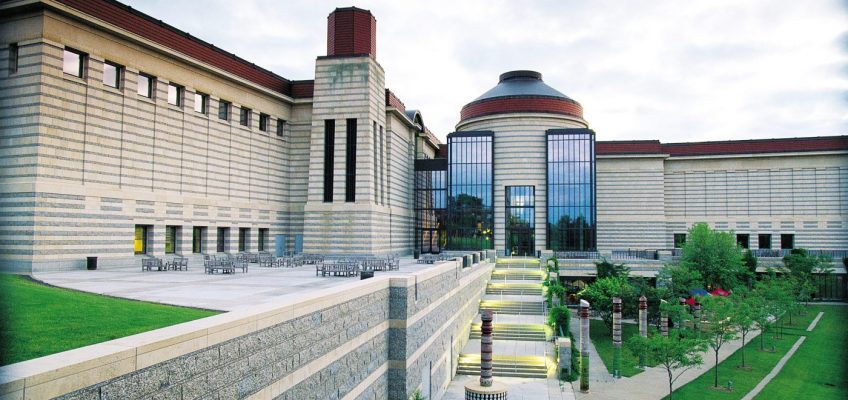Citing a federal repatriation act, the Prairie Island Indian Community has filed a claim for the “hanging rope,” long held by the Minnesota Historical Society, that may have been used to execute a Dakota man in Mankato at the end of the five-week United States-Dakota War of 1862.
Following Dakota Wokiksuye Memorial Ride, a gathering and program was held at Reconciliation Park in Mankato, Minn., on Dec. 26, 2012, to honor a new “Dakota 38” memorial honoring the 38 Dakota men executed as part of the U.S. Dakota War of 1862. (Pioneer Press: Ginger Pinson)
The St. Paul-based nonprofit, which functions as the official state archives, plans to make a decision within a month.
“Social media accounts stating that MNHS has made a determination regarding this claim are inaccurate,” reads a written statement from the historical society, released this week. “MNHS is diligently reviewing the claim as required by (federal law) and is listening to responses from Dakota Tribal Nations. (Federal) policy provides 90 days for this process and a determination will be made by May 28, 2024.”
For some, the noose has reopened historical wounds.
More than five weeks of violent clashes between the state’s military troops and the indigenous community fueled the mass displacement of the Dakota, and has overshadowed tribal relations with both the state of Minnesota and local governments for more than 160 years since, while leaving some historians and legal experts at odds over the particulars.
In 1862, following forced relocations, broken treaties, starvation due to poor harvest and limited trading during the onset of the Civil War, some 392 Dakota men were rounded up for allegedly participating in violent attacks on settlers. In all, according to the historical society, 303 of them were sentenced to death following trials that in some cases lasted as little as five minutes. The federal government intervened, noting many Dakota had sought to help keep settlers they knew as trading partners safe during the conflict.
Nevertheless, on Dec. 26, 1862, 38 Dakota men were hanged in Mankato, convicted based on evidence that some historians have called fleeting at best.
Adding to sensitivities around the hanging rope, the Minnesota Historical Society was once led by Gov. Alexander Ramsey, the state’s first territorial governor and second state governor, a man who had once called for the expulsion and extermination of the Dakota.
Deaths of innocents on both sides of the U.S.-Dakota war have fueled debate over key details and descriptive language used by historians of various eras.
After their execution, someone apparently hid one of the nooses as a souvenir, later gifting it to the Minnesota Historical Society. Some even believe it’s the noose that hung Chaska, a Dakota man whose sentence had been commuted days prior by President Abraham Lincoln, but who was executed anyway after what some historians have dubbed a case of mistaken identity, or perhaps retribution for his close relationship with Sarah Wakefield, a white woman Chaska protected during the war.
Knowledge of the noose resurfaced around 2011, when the Minnesota Historical Society considered how best to commemorate the 150th anniversary of the U.S.-Dakota war.
Those questions led to the society inviting representatives of the Dakota to a ceremonial viewing of the noose and other sensitive objects. Some historical society staff felt at the time that the nonprofit had no business holding onto the “hanging rope,” given that the federal Native American Graves and Repatriation Act provides a path by which federally-funded institutions can return Native American remains and sacred objects to tribes and descendants.
The historical society denied a claim to the noose in 2015. On Feb. 29, it received another claim under the Repatriation Act, this one from the Prairie Island Indian Community. A call to the Prairie Island Indian Community on Thursday was not immediately returned.
A spokesperson for the historical society said their comments would be limited to a written statement issued Wednesday.
“We acknowledge that this is both a harmful and painful object that does not reflect the mission and values of MNHS today,” reads the statement. “MNHS is committed to following both the letter and the spirit of the NAGPRA regulations and to working with Indigenous communities as an institution that is a steward of many Native American collections and sacred sites.”
Related Articles
Minnesota Sailor killed at Pearl Harbor is coming home
The Hawaiian steel guitar changed American music. Can one man keep that tradition alive?
Why trekking poles are the most underrated piece of outdoor gear
Justus Ramsey Stone House could rise again — with $500,000 in proposed Legacy Act backing
Obituary: St. Paul author and historian Judy Yaeger Jones believed in ‘women and their rights’


Leave a Reply